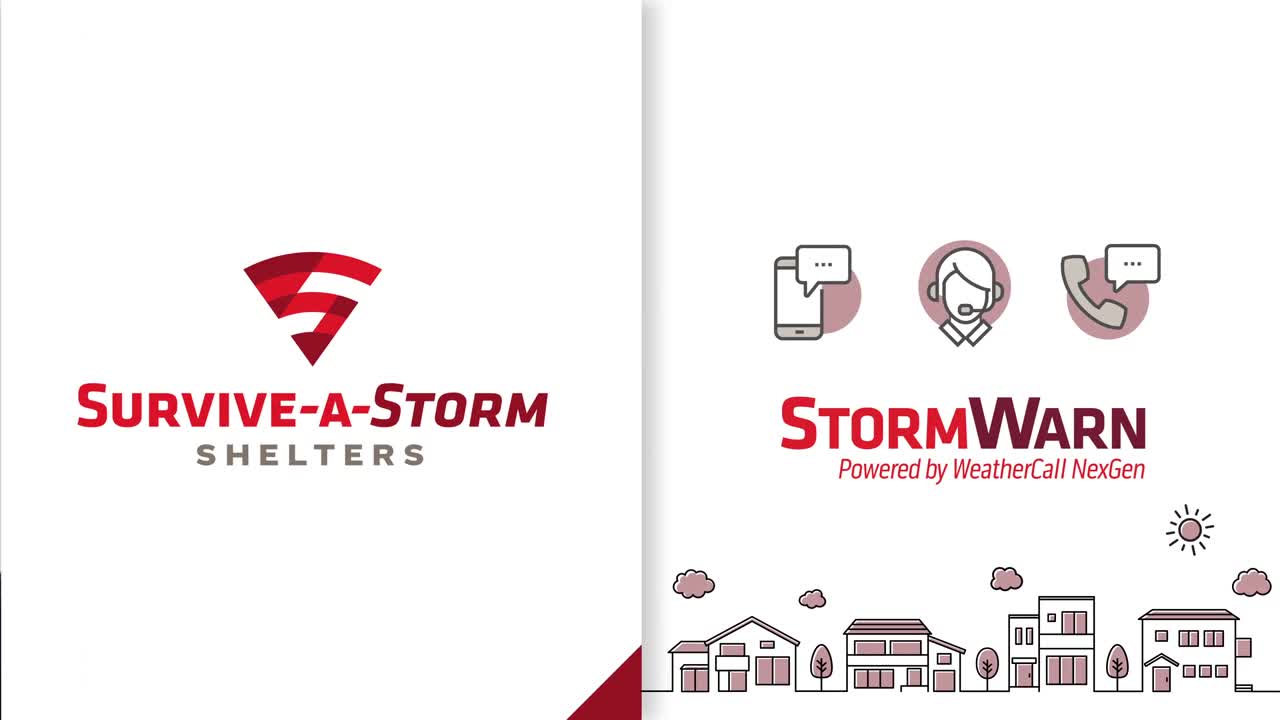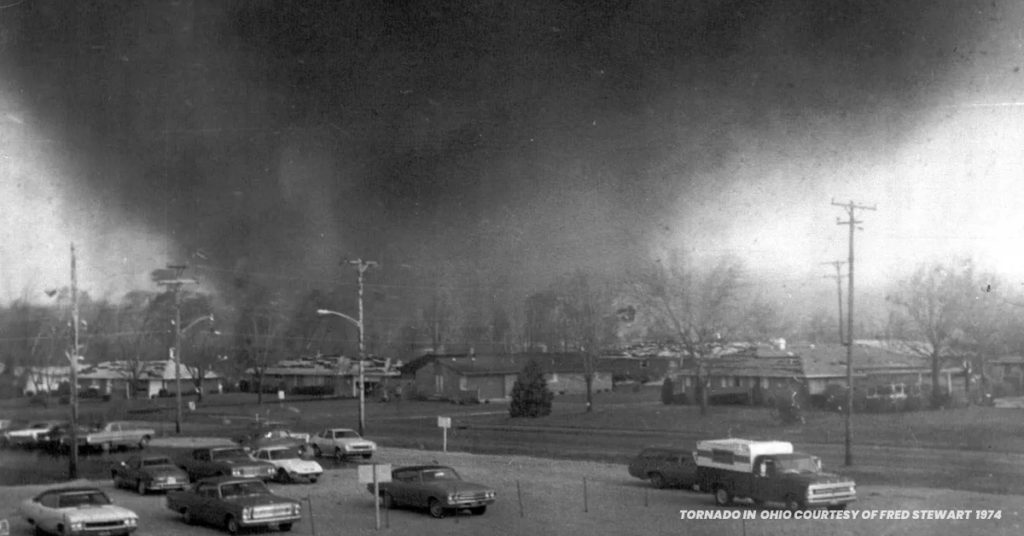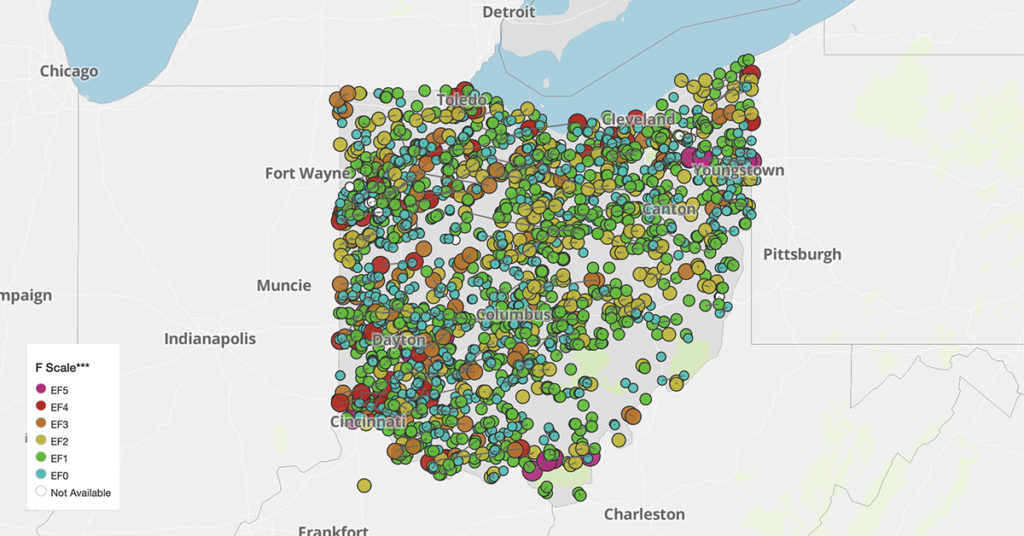Welcome to our comprehensive guide on Ohio tornadoes and storm shelters. Nestled in the heartland of the United States, Ohio has experienced its fair share of tornadoes throughout history. These powerful natural phenomena have left a profound impact on the state. In this resource, we will delve into the importance of preparing for tornadoes in Ohio, explore the availability of tornado shelters near you, provide essential safety tips, and address frequently asked questions about tornado shelters in the state. Whether you're a resident or a visitor, understanding tornadoes and knowing how to stay safe is crucial.
- Ohio is one of the top states in the U.S. for tornado activity, with an average of 19 tornadoes per year between 1991 and 2020.
- The deadliest tornado in Ohio history occurred on March 18, 1925. Known as the "Tri-State Tornado," it originated in Missouri and moved through Illinois, Indiana, and Ohio, killing 695 people in total.
- The largest tornado outbreak in Ohio history occurred on June 2, 1990, when 37 tornadoes touched down in the state, causing 13 fatalities and more than 400 injuries.
- The city of Xenia, located in southwestern Ohio, has been hit by tornadoes multiple times throughout its history, including a devastating EF5 tornado on April 3, 1974, which killed 33 people and caused over $250 million in damage.
- Ohio's tornado season typically runs from March through July, with peak activity occurring in May and June.
- In recent years, advances in technology have allowed for more accurate tornado forecasting and earlier warning systems, helping to reduce the number of fatalities and injuries caused by tornadoes in Ohio and across the U.S.
Documented Ohio tornadoes since 1950
Preparing for Tornadoes in Ohio
Tornadoes are a common occurrence in Ohio and can strike without warning, causing significant damage and posing a serious threat to public safety. But individuals, families, and even communities can prepare for these natural disasters and have a plan in place to minimize the risk of injury and property damage.
One of the most important steps in tornado preparation is to stay informed about weather conditions and to have multiple ways of receiving alerts and warnings. It may be possible to sign up for emergency alerts from local authorities. There are also weather apps for your phone to download. And, let’s not forget that there are location-based tornado alert systems. With these, subscribers get a call or text letting them know when to take shelter and when it is safe to come out. They help relieve “warning fatigue” which happens when people are so accustomed to hearing warnings for tornadoes that never come, that they fail to shelter when it is important.
A tornado emergency kit can also come in handy when you’re sheltering from a tornado. It should include items such as non-perishable food, water, first-aid supplies, flashlights, and a battery-powered or hand-cranked weather radio. Most people shelter for only a few hours at a time for a tornado. The emergency kit can be stored in your tornado shelter, or made to take with you, if you’re sheltering away from home.
By far, the most important part of preparation is knowing where you will go if a tornado comes your way. Some homes are built with basements that have reinforced areas for sheltering. Others choose to go to the safest area of their homes, the lowest level, in an interior room with no windows. It’s also possible to install a tornado shelter in your home.
When it comes to in-home tornado shelters, there are options for both above-ground tornado shelters and underground tornado shelters if your home is not equipped with a room that is tornado-rated. Even if you don’t own your home, it’s possible for a tornado shelter to be placed on an existing concrete slab and anchored down. (You can take it with you when you move and install it at the next place!) The shelter should be impact-tested for safety, and the manufacturer a member of the National Storm Shelter Association.
For some, like those who live in mobile home communities, condos or apartments, finding a community tornado shelter should be on your priority list. In this case, it will be of utmost importance to plan ahead and research where shelters are in your area.
In addition to individual preparation, there is also community tornado preparedness to consider. This can include conducting drills and exercises to test emergency response plans, identifying and reinforcing safe areas within buildings, and providing resources and support for those who may be impacted by a tornado.
Taking these steps can help to reduce the risk of injury and property damage in the event of a tornado, and can also help to improve overall community resilience and preparedness for natural disasters. By staying informed and taking proactive measures, we can work to minimize the impact of tornadoes on our communities and ensure the safety of those around us.

Tornado Shelters Near Me in Ohio
There are many public tornado shelters located throughout Ohio that are available to residents in the event of severe weather.
To find public tornado shelters in Ohio, contact your local emergency management agency or the county sheriff's office. These organizations often maintain lists of public shelters in their respective areas and can provide information on their locations and availability.
Another resource you can use is an Ohio chapter of the American Red Cross, which provides a directory of public shelters on their website. You can search for shelters by entering your zip code or city and state, and the directory will provide information on the location and capacity of each shelter.
You can also check with your local government or community organizations, such as churches or community centers, to see if they have designated tornado shelters or safe rooms available to the public. Some larger retail stores may also allow the community to shelter there if they have shelter space.
It is important to note that not all public tornado shelters are open and available at all times, particularly outside of tornado season. Having a plan in place ahead of time is very important, even if this just means identifying safe areas in your home or workplace and staying informed about weather conditions and alerts.

Know when severe weather is about to strike and when it's time for you to take shelter with our StormWarn texting program.


Ohio Tornado Safety Tips
By following these tornado safety tips, you can help to reduce the risk of injury and property damage during severe weather in Ohio.
- Monitor local weather conditions and stay alert for tornado watches and warnings issued by the National Weather Service. Watch local forecasts on days that the weather is questionable so that you know when to take shelter.
- Develop a tornado preparedness plan for your home or workplace, including identifying safe areas and evacuation routes.
- If a tornado warning is issued for your area, be prepared to seek shelter immediately in either in your designated tornado shelter or a sturdy building, preferably in a basement or interior room without windows. If you are in a vehicle or outdoors, seek shelter in a low-lying area, such as a ditch or ravine.
- If you are unable to reach a safe shelter, protect yourself by covering your head and neck with your arms or a blanket, and lie flat in a low-lying area away from trees and cars.
- Avoid standing near windows or doors during a tornado, as flying debris can shatter glass and cause serious injury.
- Keep an emergency kit with non-perishable food, water, first-aid supplies, and a battery-powered radio or cell phone charger on hand in case of a tornado.
- Stay alert after the storm: Be aware of potential hazards, such as downed power lines and gas leaks, and avoid entering damaged buildings until they have been inspected and deemed safe. And, know when it is safe to come out of your shelter!
Ohio Tornado Shelter FAQs
Q. What types of tornado shelters are available in Ohio?
A. There are various types of tornado shelters available in Ohio, including underground storm shelters, safe rooms, community shelters, and basement shelters. Each type offers different levels of protection during severe weather events.
Q. Are there any public tornado shelters in rural areas of Ohio?
A. While public tornado shelters are more commonly found in urban and densely populated areas, some rural communities in Ohio do have designated public shelters. It is advisable to check with local authorities or emergency management agencies to identify the nearest available options.
Q. How can I find the closest tornado shelter to my home in Ohio?
A. To find the closest tornado shelter to your home in Ohio, you can consult resources such as local emergency management websites, the Federal Emergency Management Agency (FEMA) website, or contact your county's emergency management agency for information and guidance.
Q. Are tornado shelters required by law in Ohio schools or public buildings?
A. Tornado shelter requirements in Ohio schools and public buildings can vary. It is essential to consult Ohio's building codes, as well as local ordinances, to determine specific requirements for tornado shelters in these facilities.
Q. What should I bring with me to a tornado shelter in Ohio?
A. When seeking shelter during a tornado in Ohio, it is recommended to bring essentials such as a flashlight, portable weather radio, personal identification documents, any necessary medications, a first aid kit, and essential personal items like water, snacks, and blankets.
Q. How often are tornado shelters inspected in Ohio?
A. Tornado shelter inspection frequencies can vary depending on the type and location. However, it is generally recommended to inspect and maintain tornado shelters annually or as recommended by the manufacturer. Regular inspections ensure the shelters remain structurally sound and functional.
Q. Are there any resources available to help me pay for a tornado shelter in Ohio?
A. In Ohio, various resources and programs may be available to assist with the cost of tornado shelters. These may include federal grant programs, local assistance programs, or financial aid provided by nonprofit organizations. It is advisable to explore these options and contact relevant agencies for more information.
Q. How many people can typically be accommodated in a tornado shelter in Ohio?
A. The capacity of tornado shelters in Ohio can vary based on their size, design, and intended use. Shelters can typically accommodate a range of people, from small residential shelters designed for a few individuals to larger community shelters capable of housing several dozen people.
Q. Are there any tornado shelters specifically designed for people with disabilities in Ohio?
A. In Ohio, efforts are made to ensure accessibility and inclusivity in tornado shelters. Some tornado shelters are specifically designed to accommodate people with disabilities, providing features like wheelchair accessibility, accessible seating, and support for individuals with mobility challenges.
Q. What safety features should I look for when choosing a tornado shelter in Ohio?
A. When selecting a tornado shelter in Ohio, it is crucial to consider safety features such as reinforced construction, impact-resistant doors, ventilation systems, and emergency communication options. Additionally, proper installation, adherence to building codes, and compliance with FEMA guidelines are important factors to consider for optimal safety and protection.


